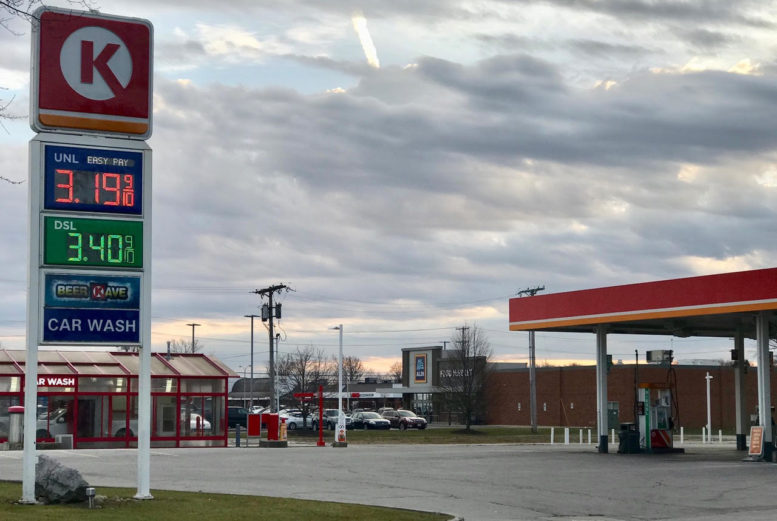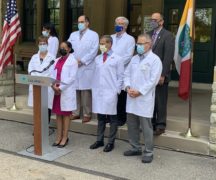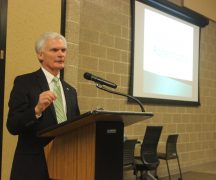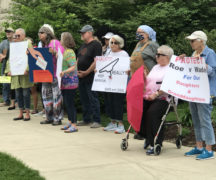A panel of economists overwhelmingly thinks that a proposal to cut Ohio’s gas tax is a bad idea — both because it will sap state funds for infrastructure and because it will take away incentives to conserve energy.
In 2019, Gov. Mike DeWine pushed for an increase in the state’s 25-cents-a-gallon gasoline tax and got part of what he wanted — a 10.5-cent increase that took effect in July of that year.
Now DeWine’s fellow Republican, Sen. Stephen Huffman, R-Tipp City, is proposing to suspend the increase for five years. He’s signed up 15 Republican cosponsors, including State Sen. Theresa Gavarone, R-Huron for the legislation, Senate Bill 277.
Passing the bill would be a step in the wrong direction, the great majority of a panel of 32 economists said in a survey that was published last week by Scioto Analysis.
They were asked if they agreed that “Decreasing state highway spending for the next five years by repealing increases to the state gas tax would create economic benefits that outweigh the policy’s economic costs.”
Fifteen economists said they strongly disagreed, 11 disagreed and four said they were uncertain. Just two agreed with the proposition, but neither gave an explanation in the comment section of the survey.
Some economists who did comment pointed to a straightforward tradeoff: Motorists can either pay higher gas taxes to help the state maintain roads or they can pay more at the repair shop after driving on crappy ones.
“This proposal simply shifts burdens; while motorists save pennies at the pump, dollars will be spent on expedited vehicle depreciation and in repair shops over the five years plus of highway maintenance neglect,” independent economist Key. E. Strong wrote. “The trucking industry with heavyweight, road-decimating vehicles will cash in on savings and cushion their bottom line at the expense of the passenger vehicle drivers.”
However, one economist who was uncertain about the proposed tax suspension said some maintenance costs would be covered with revenue from the bipartisan infrastructure package that President Joe Biden signed late last year.
“Spending from the 2021 federal infrastructure package (Infrastructure Investment and Jobs Act) will at least partially offset the reduced spending,” said Thomas Traynor of Wright State University. “I would need more granular information to be able to answer the question, and that is not available yet.”
Cort Rodet of Ohio University wrote that gasoline taxes are not only an efficient way to get the people who use roads to help maintain them, they’re also a tool to address the existential threat of climate change.
Research “shows (gas taxes) are a better means of addressing climate issues than are fuel standards,” Rodet wrote. “Furthermore, I doubt the benefit to individual households of freezing tax increases will be substantial. If the average household consumes 1,200 gallons of gas per year and pays $0.28 per gallon in taxes, that implies a total gas tax bill of $336 per year per household, which is about 0.5% of the average Ohio household’s income. Stopping increases will not do much for the average household, while it could mean roads and improvements fall by the wayside.”
***
Also from Ohio Capital Journal:
DeWine made written policy ‘promises’ to the gun lobby. Will he keep them?
In 2018, Gov. Mike DeWine told the gun lobby, in writing, that he’d deliver as governor on two major firearms bills if they reached his desk.
One expanded the use of lethal force in self defense. The other allowed Ohio adults to carry concealed weapons without training or a background check.
About a year later, a young man shot and killed nine people and injured 17 in a mass shooting outside a Dayton bar. It was the nation’s second mass killing in a 24-hour period. In the aftermath, DeWine attended the funeral of Dion Green, who was at the bar with his father that night and watched him die.
After the funeral, the governor handwrote a letter, obtained by the Ohio Capital Journal, to Green. He promised action.
“As governor, I will do everything that I can to see that something positive comes out of this horrible tragedy,” DeWine wrote.
“I believe that we can do things to make everyone safer. While we know that can’t bring your dad back, we (I) owe it to all victims to try.”
How these two sets of promises comport is unclear, but the picture could soon come into focus: State lawmakers in the House and Senate have both passed separate but substantially similar versions of legislation to waive permitting, background check and eight-hour training requirements (part of the current law) to carry a concealed handgun in the state. (State Sen. Theresa Gavarone, R-Huron is a co-sponsor of the senate legislation.) Ohioans 21-and-older would automatically be allowed to carry a concealed firearm they lawfully possess, under the bill. READ MORE
How these two sets of promises comport is unclear, but the picture could soon come into focus: State lawmakers in the House and Senate have both passed separate but substantially similar versions of legislation to waive permitting, background check and eight-hour training requirements (part of the current law) to carry a concealed handgun in the state. (State Sen. Theresa Gavarone, R-Huron is a co-sponsor of the senate legislation.) Ohioans 21-and-older would automatically be allowed to carry a concealed firearm they lawfully possess, under the bill. READ MORE
Errors, deception preceded deadly nursing home covid outbreaks, inspections show
Regulators found infection control violations in at least three dozen Ohio nursing homes placed the health and safety of patients in “immediate jeopardy” during the COVID pandemic, an Ohio Capital Journal investigation has found.
Between allowing nurses with active COVID-19 infections to report for their care duties, placing infected residents in shared rooms with uninfected roommates, flouting preventive measures like masks and quarantines during outbreaks, and other preventable errors, inspectors found several instances of infection control failure from nursing homes that preceded massive and deadly outbreaks during the pandemic.
The conduct earned the facilities “immediate jeopardy” status, leading to steep fines from the Centers for Medicare and Medicaid Services and sometimes forcing facilities to stop admitting new patients until they corrected course.
Some of the allegations go beyond negligent conduct and toward deliberate acts. In two nursing homes, inspectors for CMS claimed facility staff sent fake samples into the lab or backdated test results to give the appearance of more robust responses to outbreaks at their early stages.
At least 84 residents died in connection with the alleged infection control violations at 13 Ohio facilities during the pandemic.
“They should have been prepared and knowledgeable about what they could have done to prevent these injuries and deaths,” said Erin Pettegrew, the state’s deputy long-term care ombudsman at the Ohio Department of Aging, who reviewed reports obtained by the OCJ.
“It’s an incredibly contagious disease and unprecedented, of course, but these examples were systemic failures on the part of the facility to protect their residents.” READ MORE





